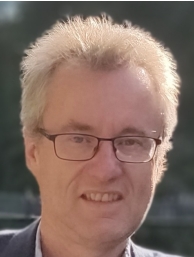Title: Recent imaging technologies towards a more realistic and immersive user experience
Speaker: Frederic Dufaux(IEEE Fellow)
Affiliation: CNRS
Abstract: Nowadays, thanks to rapid technological progresses over the last decades, digital images and video sequences are ubiquitous, with many remarkable and successful applications and services. A key driver to research and development activities has been the objective to provide an ever-improving visual quality and user experience.
In this context, one of the next frontiers is to be able to faithfully represent the physical world and to deliver a perceptually hyperrealist and immersive visual experience. On the one hand, the human visual system is able to perceive a wide range of colors, luminous intensities, and depth, as present in a real scene. However, current traditional imaging technologies cannot capture nor reproduce such a rich visual information. On the other hand, immersive applications aim at giving to the user the sense of being present and immersed in one location or environment, without being physically there.
Recent research innovations have made it possible to address current bottlenecks in multimedia systems. As a result, new multimedia signal processing areas have emerged such as ultra-high definition, high dynamic range imaging, light fields, and point clouds. These technologies have the potential to bring a leap forward for upcoming multimedia systems. However, the effective deployment of hyper-realistic video technologies entails many technical and scientific challenges.
In this talk, I will discuss a few recent research activities related to hyper-realistic and immersive imaging. I will first consider point clouds, a very promising type of representation. One major distinguishing feature of point clouds is that, unlike images, they do not have a regular structure. Moreover, they can also be very sparse. For these reasons, point cloud processing presents significant challenges. Here, I will present recent learning-based approaches for point cloud compression and quality assessment. In a second phase, I will discuss high dynamic range imaging and in particular tone mapping operators (TMO). TMOs are used to compress the dynamic range with the aim of preserving the perceptual cues of the scene. Here, I will show how we can leverage semantic information as well as contextual cues from the scene to drive a TMO in a way similar to how expert photographers retouch images.
Biography:

Frederic Dufaux is a CNRS Research Director at Université Paris-Saclay, CNRS, CentraleSupélec, Laboratoire des Signaux et Systèmes (L2S, UMR 8506), where he is head of the Telecom and Networking research hub. He received his M.Sc. in physics and Ph.D. in electrical engineering from EPFL in 1990 and 1994 respectively.
Frederic is a Fellow of IEEE. He was Vice General Chair of ICIP 2014, General Chair of MMSP 2018, and Technical Program co-Chair of ICIP 2019 and ICIP 2021. He served as Chair of the IEEE SPS Multimedia Signal Processing (MMSP) Technical Committee in 2018 and 2019. He was a member of the IEEE SPS Technical Directions Board from 2018 to 2021. He is Chair of the Steering Committee of ICME in 2022 and 2023. He was also a founding member and the Chair of the EURASIP Technical Area Committee on Visual Information Processing from 2015 to 2021. He was Editor-in-Chief of Signal Processing: Image Communication from 2010 until 2019. Since 2021, he is Specialty Chief Editor of the section on Image Processing in the journal Frontiers in Signal Processing.
Frederic is also on the Executive Board of Systematic Paris-Region, a European competitiveness cluster which brings together and drives an ecosystem of excellence in digital technologies and DeepTech.
He has been involved in the standardization of digital video and imaging technologies for more than 15 years, participating both in the MPEG and JPEG committees. He was co-chairman of JPEG 2000 over wireless (JPWL) and co-chairman of JPSearch. He is the recipient of two ISO awards for these contributions.
His research interests include image and video coding, 3D video, high dynamic range imaging, visual quality assessment, video surveillance, privacy protection, image and video analysis, multimedia content search and retrieval, and video transmission over wireless network. He is author or co-author of 3 books, more than 200 research publications (h-index=50, 10000+ citations) and 20 patents issued or pending.